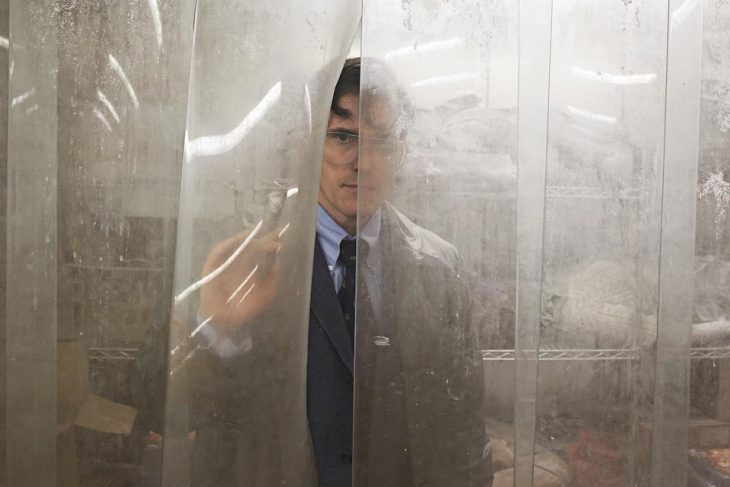Danish director Lars von Trier is back at Cannes Film Festival, proclaiming that ‘it’s all good – we had a little misunderstanding for seven years’ and worrying that his new serial killer movie, The House that Jack Built, isn’t divisive enough.
In fact, the reception of the film has indeed revealed an divide in the mentality of contemporary culture. More than a hundred members of the audience walked out in protest at the film’s première and a similar number did the same from the press screening this week. Nonetheless, Von Trier received a lengthy standing ovation on his arrival to the première, and those who stayed till the end acknowledged the film with demonstratively insistent applause.
A strong tension between two approaches to art and culture has come to light in Cannes this year, as the festival explicitly declared its dedication to the #MeToo movement and at the same time welcomed back after seven years of exclusion one of the least conforming and most provocative directors with a film about a misogynist mass murderer. On the one hand there is the moral, and these days distinctly feminist, approach that demands that art is prescriptive in a morally correct and inoffensive manner and that it only provoke those highest in the hierarchy of cultural privilege. This approach dismisses the notion of the auteur, does not support artistic genius unless it follows certain prescriptions, refuses to distinguish between artist and artwork, and prefers democratic, consensual art to originality and singularity of artistic vision.
In opposition to this there is the approach that stresses the autonomy of art, recognises moral ambiguity and experimentation as not only unavoidable in art, but as highly valuable, and expects art to provoke not just certain privileged groups in society, but all individuals. According to this approach it is not the responsibility of art to help those who are lowest in the hierarchy of cultural privilege. Though that can of course be one of the intentions and effects, this responsibility essentially belongs to the political sphere.
To critics with a prescriptive inclination the film proves to be an inconvenient challenge, and their fumbled attempts to disparage the film have been amusing to behold. The Guardian’s Kate Muir has tried to discredit Von Trier and the film by simply mentioning him in the same breath as Woody Allen and Roman Polanski – an unethical and manipulative move, as there is no basis for branding him a sexual predator. In a long and ambivalent review Variety’s Owen Gleiberman claims that the film fails because we are unable to identify with the mass murderer it portrays – which is funny considering the outrage in 2011 at Von Trier’s own ability to identify with a mass murderer (Hitler). The Guardian’s Peter Bradshaw substantiates his two-out-of-five-star-assessment with the fact that a supermarket logo on a plastic bag in the film looks inauthentic. And then there is the general outrage caused by the film’s simulated cutting off of a duckling’s leg, which is entirely absurd considering the extent of human mutilation in the film, not to mention that at this very moment kids all over the world are at work maliciously mutilating animals in reality as kids do (and let’s not forget the daily extinction of animal species due to unconscionable human behaviour).
The reception, therefore, brings to light the hypocrisy, short-circuited logic, and lack of critical self-assessment of this faux-moral approach, which has increasingly come to determine cultural debate, and its untenability is becoming evident. Moreover, the inclusion of Von Trier at Cannes this year has revealed a surprising resistance and an underlying ambivalence in the current cultural mindset. Perhaps the strong ambiguities and contradictions at this year’s Cannes indicate that there is hope for a turn of direction, away from the pseudo-moral, prescriptive approach to art and towards a culture that is inclusive, but which above all else values and prioritises artistic originality and vision.






Comments